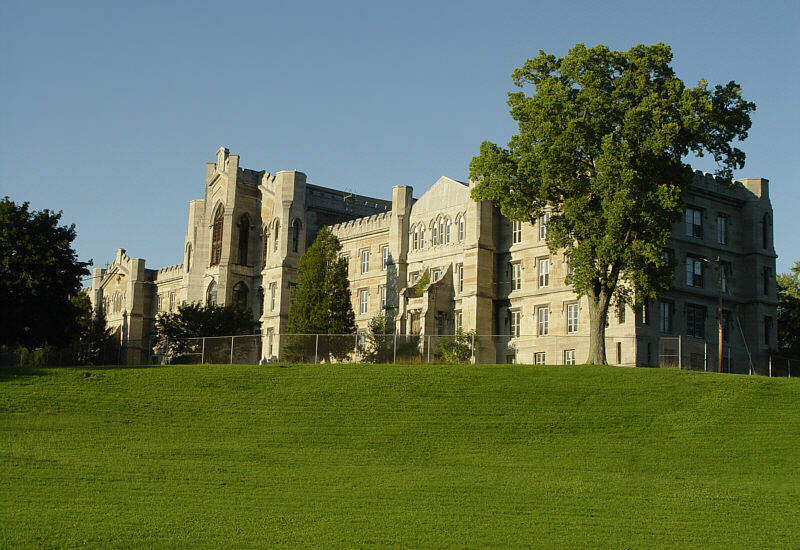
People
Supervision of the inebriate asylum's construction, which occupied most of Perry's time until 1866, led to Perry's relocation to Binghamton, where he remained a leading and prolific architectural force in the Southern Tier and adjacent Pennsylvania through the latter half of the nineteenth centruy. Perry undertook smaller projects in Binghamton as the work on the asylum commenced, including the Italianate style Sisson Store (1862-1863, still standing but greatly altered) on Court Street, a new Court Street bridge (1865, since replaced), and several residential projects. After the asylum's completion, Perry was commissioned to design many prominent ecclesiastical, commercial and residential structures in the area. Perry's churches in Binghamton, which were designed using a Gothic Revival vocabulary in brick and limestone, included Centenary Methodist Episcopal (1866-1868, standing), First Congregational Church (1867-1869, standing), St. Patrick's Roman Catholic Church (1867-1872, standing), and First Baptist Church (1870-1872, since demolished). Other Binghamton projects included: the J.Stewart Wells residence (1867, standing),Sherman Phelps residence (1870, standing), the First National Bank (1870, demolished), Phelps Block (1871, demolished), and the Hotel Bennett (1877, demolished).
In general, Perry applied many of the principles of institutional architecture, such as interior plans with large volumes, monumental-scaled circulation spaces, and generous use of natural |